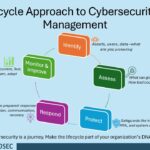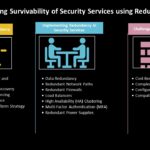
The increasing confidence and dependence on the internet for personal and business purposes has led to a rise in cyber-attacks such as hacking, phishing, and ransomware. In 2022, the average total cost of a data breach in the United States was $9.44 million according to IBM 2022 data breach report. According to Verizon Data Breach Investigations Reports, there is a 13% increase in Ransomware breaches – more than in the last 5 years combined and 82% of breaches involved the human element, including social attacks, errors and misuse. Unfortunately, many individuals are not aware of the risks associated with using the internet and still engage in insecure behaviors that put their information at risk.
Challenges of protecting online users and employees
One of the main challenges of protecting users, organizations and sensitive data in the cloud is the constant evolving nature of cyber threats. Hackers and cybercriminals are constantly developing new techniques to exploit vulnerabilities and gain unauthorized access to applications, systems, and networks.
Additionally, the number of connected devices and the amount of personal information stored online has grown exponentially, providing more opportunities for attackers to gain access to sensitive information. According to Cisco Annual Internet Report (2018-2023), there will be 29.3 billion networked devices by 2023, up from 18.4 billion in 2018 and 5.3 billion total Internet users (66% of the global population) by 2023.
Insecure behaviors can put individuals and organizations at risk of data breaches, identity theft, and financial loss. For example, using a weak password can make it easy for hackers to gain access to an individual’s personal information, while clicking on a suspicious link can lead to the installation of malware on a device. According to NordPass research report, The misfortunate passwords of Fortune 500 companies, passwords of Fortune 500 companies in 17 different industries appears in 15,603,438 data breaches.
How can users be protected online?
Web security is a practice or measures taken to protect personal and organizational information, online systems and networks from unauthorized access, use, disclosure, disruption, modification, or destruction.
The importance of educating people about insecure behaviors cannot be overstated. By educating, raising awareness about the risks associated with insecure online behaviors and providing people with the knowledge, tools, and skills to identify and avoid these behaviors, these can significantly reduce the number of successful cyber-attacks and protect their personal information.
Also, educating employees about web security is critical for businesses, as they are often targeted by cybercriminals. This can help to prevent data breaches and protect the company’s reputation. This education can take many forms, such as online tutorials, in-person training, and resources for businesses and organizations.
In addition, it’s important to note that web security is not only important for individuals and businesses but also for a country, cyber-attacks can cause national security threats, and that’s why educating the public about web security and insecure behaviors is crucial for the protection of the nation.
In conclusion, web security is a critical issue that affects individuals and businesses alike. Educating people about insecure behaviors is vital to improving web security and protecting individuals and organizations from cyber threats.





Your point of view caught my eye and was very interesting. Thanks. I have a question for you.
Thanks for sharing. I read many of your blog posts, cool, your blog is very good.
Your point of view caught my eye and was very interesting. Thanks. I have a question for you.
Your article helped me a lot, is there any more related content? Thanks!